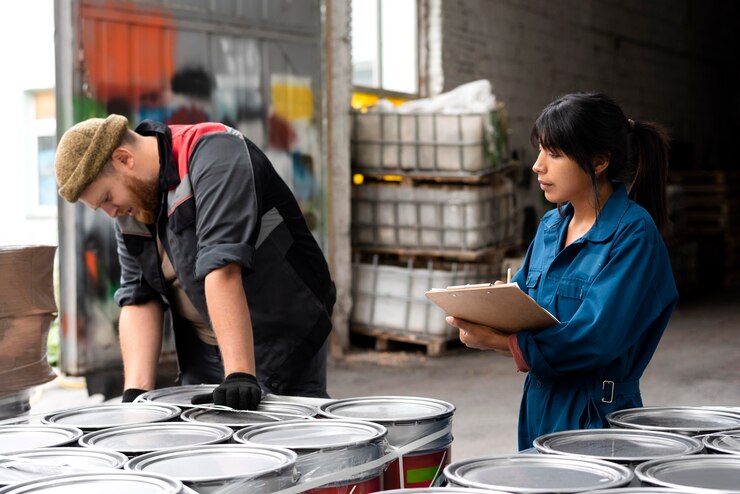Ever wondered if there’s a difference between a vendor and a supplier? In the fast-paced world of business, a smooth-running supply chain is crucial for success. But within that chain, there are distinct roles played by different partners. Understanding the vendor and supplier differences can be a game-changer for your procurement process.
Unveiling the Mystery: Vendors vs. Suppliers
At first glance, the terms “vendor” and “supplier” might seem interchangeable. However, there are key distinctions between the two when it comes to vendor and supplier differences. Let’s delve deeper to understand their unique contributions to your supply chain:
Who are the Vendors?
Vendors typically provide finished goods that are ready to be sold to the end consumer. They play a vital role in the final leg of your supply chain, delivering products that meet customer needs and expectations. Here’s a breakdown of what vendors typically offer:
-
Ready-to-Sell Products: Vendors don’t manufacture the goods themselves. Instead, they source finished products from wholesalers or manufacturers and resell them to consumers or other businesses.
-
Focus on Customer Experience: Vendors often have direct contact with customers. This means they play a crucial role in shaping the customer experience through effective marketing, sales, and customer service.
-
Variety and Selection: Vendors often carry a wide variety of products from different brands to cater to a broad customer base.
Who are Suppliers?
Suppliers, on the other hand, are the backbone of your production process. They provide the raw materials, components, and services that are essential for creating your finished goods. Here’s what suppliers bring to the table:
-
Raw Materials and Components: Suppliers provide the building blocks needed to manufacture your products. This could include everything from metals and fabrics to electronic components and chemicals.
-
Production and Manufacturing Support: Some suppliers might offer additional services beyond just materials. This could include manufacturing assistance, assembly, or packaging solutions.
-
Long-Term Partnerships: Building strong relationships with reliable suppliers is critical for a stable and efficient supply chain.
Real-World Example: Amrepmexico
Amrepmexico, a renowned artisanal tequila brand, provides a perfect example of the vendor and supplier difference. They partner with agave farmers in Jalisco, Mexico (their suppliers) who provide high-quality blue agave plants, the essential raw material for their tequila. Amrepmexico then uses traditional distillation methods to create their tequila (their production process) before distributing it to retailers and restaurants (their vendors) who sell it to consumers.
The Impact of Understanding the Vendor and Supplier Difference
Knowing the vendor and supplier differences can empower your business in several ways:
-
Improved Procurement Strategies: By clearly identifying your vendor and supplier needs, you can develop targeted procurement strategies. This can help you negotiate better prices, secure reliable sources of materials, and ensure timely delivery of finished goods.
-
Enhanced Risk Management: Understanding the roles of your vendors and suppliers allows you to identify potential risks within your supply chain. For example, you can diversify your supplier base to mitigate the impact of disruptions at any single source.
-
Stronger Relationships: Building positive relationships with both vendors and suppliers is essential for long-term success. By understanding their unique needs and perspectives, you can foster mutually beneficial partnerships.
Conclusion: Working Together for a Streamlined Supply Chain
A successful supply chain hinges on a well-coordinated dance between vendors and suppliers. Vendors ensure your products reach the right customers, while suppliers provide the foundation for those products to exist. Recognizing vendor and supplier differences empowers you to build strategic partnerships that optimize your entire operation.
Here’s a quick recap to solidify the distinction:
-
Vendors deal in finished goods, focusing on customer experience and offering a variety of products.
-
Suppliers provide the raw materials and components needed for production, forming long-term partnerships to support your manufacturing process.
By appreciating these differences, you can create a winning formula for a streamlined and efficient supply chain.
FAQ: Demystifying the Vendor and Supplier Difference
Q: Can a company be both a vendor and a supplier?
A: In some cases, a company might act as both a vendor and a supplier. For example, a company that manufactures components (supplier) might also sell finished products to retailers (vendor).
Q: How can I determine if I need a vendor or a supplier?
A: Consider the stage of your product in the supply chain. If you need a finished good ready for sale, you’ll likely be looking for a vendor. If you need materials to create a product, you’ll need a supplier.
Q: What are some additional factors to consider when choosing vendors and suppliers?
A: Beyond the vendor and supplier difference, consider factors like quality, price, reliability, lead times, and minimum order quantities when making your selections

